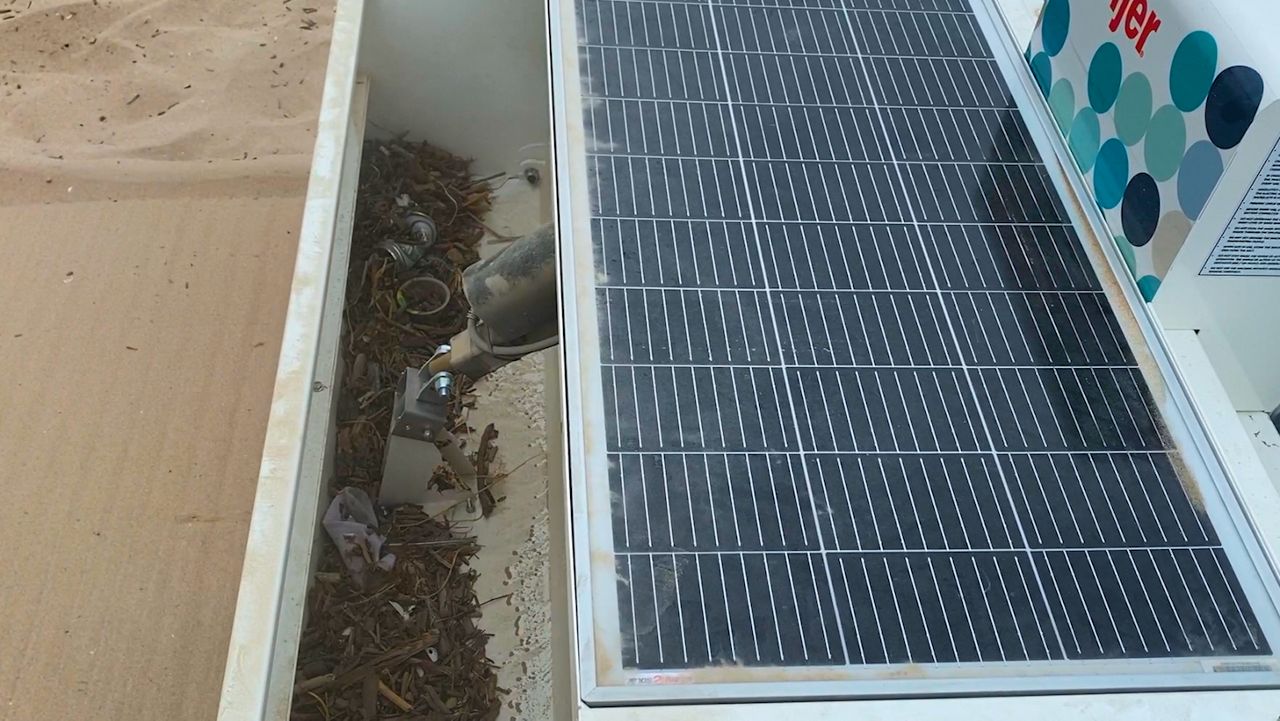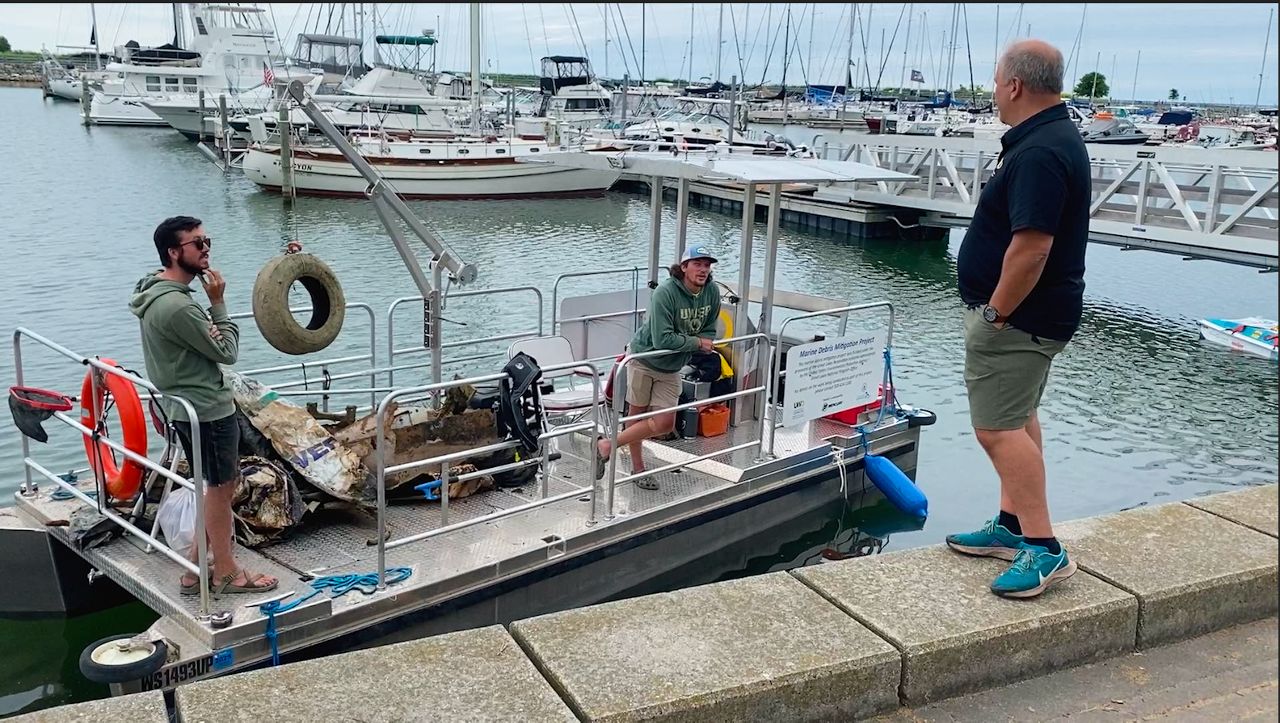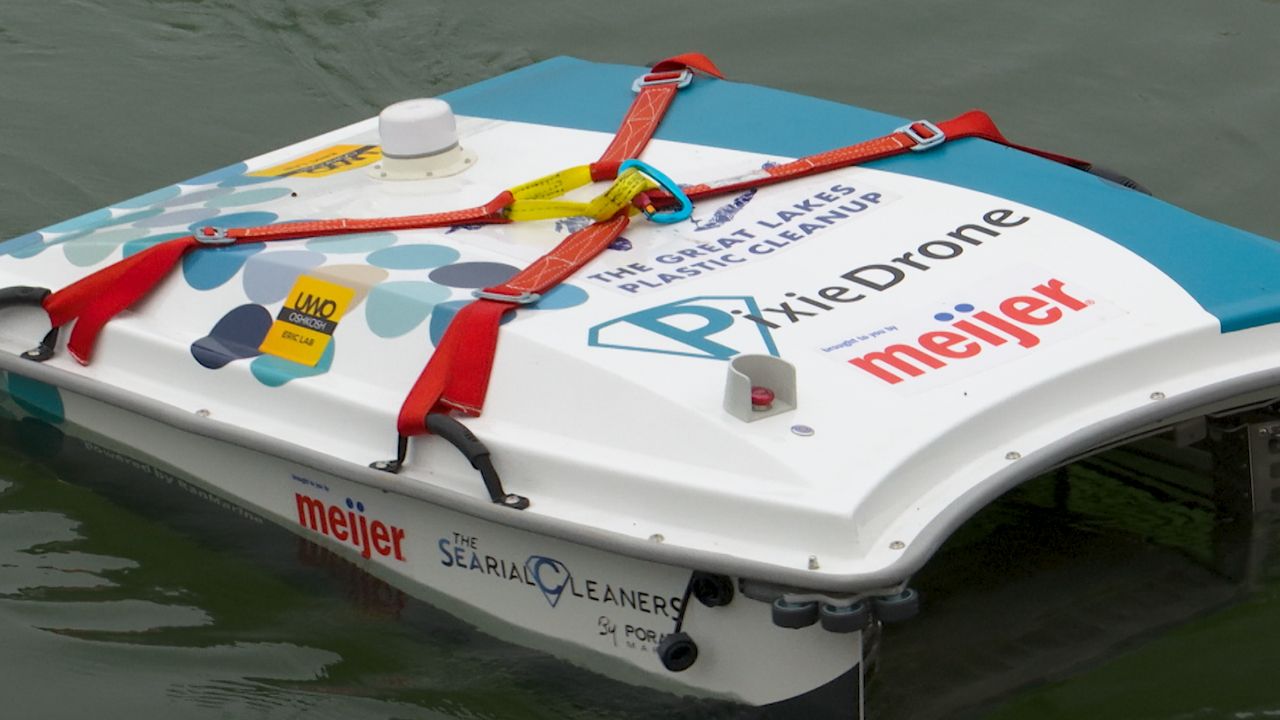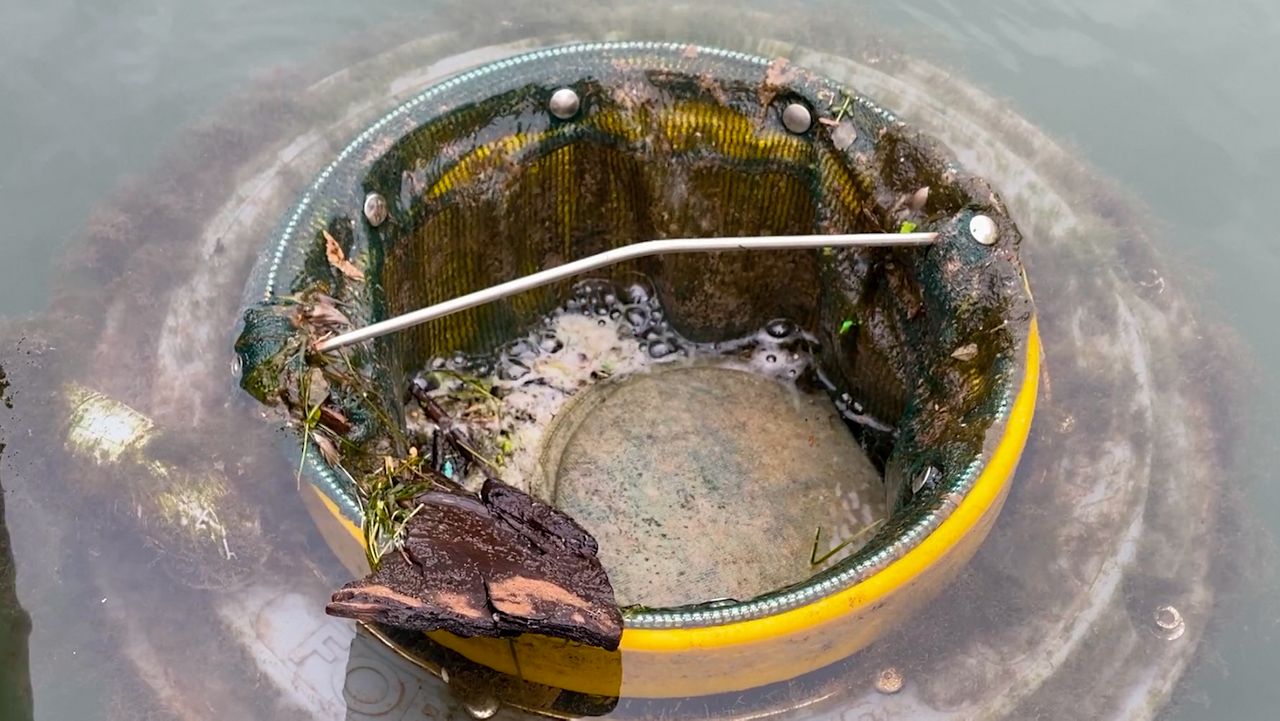MANITOWOC, Wis. — All was quiet on a Manitowoc shoreline right before what some dubbed as the ’Sandboni,’ followed by operator Amanda Hoehn, went into cleanup mode.
The BeBot beach cleaning robot collects and shakes sand, which filters through the machine, leaving behind trash in its catch bin.
“We pick up from probably running an hour or so at each beach. I’d say average half a kilo of garbage each time,” said Hoehn.
A natural sciences and biology student at St. Norbert College, Hoehn said they once picked up 220 cigarette butts within an hour. After July 4, the BeBot was especially busy.
“We did pick up a lot of firework residue, but there were things like shoes, cans, bottles, food wrappers,” said Hoehn.

She’s one of about 50 students working through UW Oshkosh’s Environmental Research & Innovation Center, or ERIC.
ERIC Director Greg Kleinheinz and students showed off the innovative technology they use to clean local waters.
“We have students from 11 different universities that work on our various projects. They’re able to live and work in the communities where these technologies are being deployed,” said Kleinheinz.
Last May, Spectrum News 1 introduced viewers to the marine debris boat days before it launched.
After over a year of operation, the crew showed off a recovered tire and an old stove taken from the water.

Kleinheinz said each unit has a unique function, including the PixieDrone, which looks like an oversized remote-controlled boat.
“It's effective in places that accumulate debris in sort of large quantities or corners able to get places the marine debris boat can’t," said Kleinheinz.
UW-Oshkosh student Bobbi Blahnik grew up in Algoma and said cleaning up the waters near Lake Michigan holds extra meaning for her.
"The things we pick up here are all personal, like food wrappers, plastic pieces from toys. Just taking a moment and acknowledging your footprint is so important," said Blahnik.

The students get their hands on what Kleinheinz calls ‘tip of the spear’ marine debris collection technology.
"The only technology that has been deployed outside of this region is the Seabin, which has been used in Florida and out east," said Kleinheinz.
The unmanned Seabin filters water at locations like marinas, and has been described as a cross between a pool skimmer and a trash can.
According to the Council of the Great Lakes Region, about 22 million pounds of plastic enter the Great Lakes each year.
"Eighty percent of waste and litter found on our beaches is plastic," said Lora Shrake, Council of the Great Lakes Region Senior Program Director of Business and Sustainability.
The job of the students doesn't end with just collecting the waste.

“We are deploying the technology to clean it up, to capture that waste, characterize it, understand what it is, so we can narrow down the sources and pathways of that litter to identify the root of the problem,” explained Shrake. “Then eventually create a plastic profile for each of the Great Lakes, so we can try to stop plastic and litter from reaching our beaches in the first place.”
Shrake thinks the students get a great learning experience with the program, but they’re not the only ones.
“These technologies provide a great education opportunity. When beachgoers see this equipment in operation and the amount of trash collected, they can start to understand the gravity of the problem,” said Shrake.
Shrake acknowledged Meijer and the National Oceanic and Atmospheric Administration for funding and support of the project. She hopes to build the program to other sites across the Great Lakes.
That could mean more students getting their hands dirty to fight pollution.
“I’m just excited to have gotten the opportunity to go out and do field work and actually experience science in nature instead of just within the confines of the classroom,” said Hoehn.
It’s a pretty good summer gig for environmentally-minded students, getting their hands on the latest technologies and cleaning up the water along the way.



